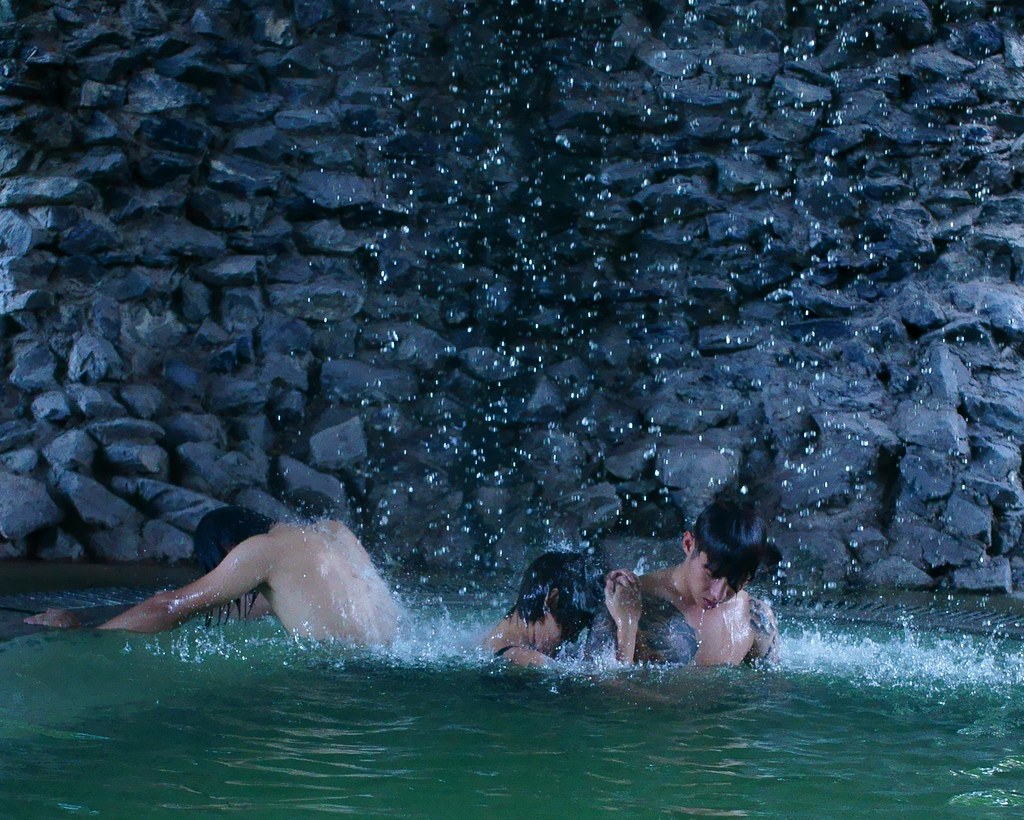Not much self generated news this time, so let's go to the regional soakers press:
The Jakarta Post (12 Oct) has a feature article of the hot springs at the foot of Gunung Sibayak on Sumatra (Indonesia), previously highlighted on this site. The village of Semangat Gunung counts 9 commercial soaking sites and according to the article can
'remove dandruff'.
Also noteworthy:
Bathing in Borneo'Sulfur powder is obtained by sieving sulfur water after being laid exposed for one night. It is sold at the price of Rp10,000 (US$1.04) for three packs. Many tourists buy the powder. Sugiran, a tourist from Medan, was one of the visitors buying the powder. He said he had taken a sulfurous bath for the first time and was interested in applying the powder to heal his skin disorder. “The rash on my body will hopefully be cured by this powder,” added Sugiran while soaking in a pool'.
The local Post reports (9 Sept):
'The hot spring at Kpg Panchor Dayak along Kuching [Malaysia]- Serian road recorded 15,076 visitors in the first eight months of this year'.
That's 60 a day for recently improved
springs.
'The Mambong MP [Deputy Tourism Minister Datuk Dr James Dawos] advised the village chief to request for parking space from the local council and electricity to be connected to the area. He said his ministry was willing to help'.
Hmmm, lets not hope it's a road
to ruin.
A very neutral review
of Southeast Asia's most popular hot spring, Poring, with the addition
of this:
'If you are shy to bath in public, you can pay a little more for the private room located in the cabin behind the hot spring. Each room can accommodate two people. Remember to bring your swimsuit as you are not allowed to get naked in public in a Muslim country...'.
?
Thai Tales
Travel Thailand has an entry on Thasatorn hot spring, Suratthani, Thailand. Some nice pictures, other not much to add to the Soaking in Siam blog entry. Travel Thailand does have an entry on the hot spring of Samet, Chaiya, Suratthani:
'At Tambon Samet in Amphoe Chaiya, Surat Thani Province. away from Amphoe Chaiya about 4 kilometers hot springs is holy water. consists of two small caves and two natural hot spring'.
Again. nice photo's.
Sai Ngam hot spring, Pai, Mae Hong Son province, Thailand.
Photo found on picasa site of Ka zu. Apparently this hot spring is a tourist destination waiting to be discovered with a few tourist bungalows present.
By the way, Soaking on Siam has once more an overview of press clippings on the newly opened Yunomori onsen, a natural hot spring bath house in the center of Bangkok. Most comment on how outlandish the Japanese bathing culture is towards the conservative Thai society (as well as that towards the anglo-saxon reporters backgrounds), though they note that many Thai join in. All glowing repotrys (not only literally ...).
I have two questions, one about the source of the water and the need to keep the water sanitary. And the other weather this may prove to be a new trend in Siam soaking, set to be replicated by the copycats (I WISH)?
Meanwhile in the Phillippines, an individual is doing just that ...
'It was deserted but not closed. I was the only guest that day. Perfect for skinny dipping which I did!'
Looneyplanet visited the hot spring of Baslay on Negros. And enjoyed it, despite the absence of crowds. Or because there were none ...
Otherwise
An interesting side theme. Ahave, an Israeli cosmetics company has been accused of war crimes by mining Palestian-owned resources: mud. The company response: no comment. Report by Sydney Morning Herald (4 Sept. 2012). More info on the controversy on Wikipedia.
Geothermal news: this time it is the New York Times (Oct 1) which picks up on the discussion in Japan on whether or not to promote geothermal energy generation.
'Then came the Fukushima disaster.In March, the government lifted its decades-old ban to allow geothermal projects in five new potential sites in national parks and monuments to go ahead, under strict oversight.Tightly regulated or not, that decision has inevitably caused tension between conflicting local business interests, environmentalists and geothermal energy developers. In Yuzawa City, for example, existing and prospective geothermal power generation facilities typically are close to the hot spring resorts.
...
Mr. Sakaguchi, the researcher at the industrial science and technology institute, said he understood the concerns of Oyasu’s onsen innkeepers.In two known cases outside Japan, geothermal power developments have caused hot springs to dry up, he noted. One such case was recorded in the 1970s in Steamboat Springs, Nevada, he said.Still, “a clear case of geothermal development causing a hot spring to dry up has not occurred in Japan,” Mr. Sakaguchi added. “The technology to pick up underground movements and simulation technology has really improved in the last two decades, so the risk is much lower.”It typically can take 20 years to develop a geothermal plant, if only because it takes time to earn the trust and cooperation of local people, Mr. Sakaguchi said'.
Elsewhere a review of Japan and renewables mentions this:
'Even geothermal, touted as a vital energy investment in Japan given the country’s abundant hot springs, is facing a battle with local resorts – the Kusatsu Hot Spring Resort association, on Kyushu island, announced opposition to developing the clean energy for fear that the precious mineral hot springs would decrease in supply'.
Meanwhile other nations are less restricted by the soaking set. Vietnam announces a project to come online at the end of this year.
Found on flickr, posted by setsunalee'Thai Drama,Chiang mai
San Kamphaeng Hot Spring
Thailand
NEX 3 , SIGMA 30 , MEIKE box (water/dust/sand proof )'










Very nice post, i love it so much....
ReplyDelete